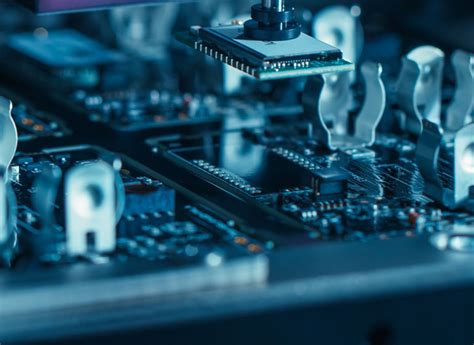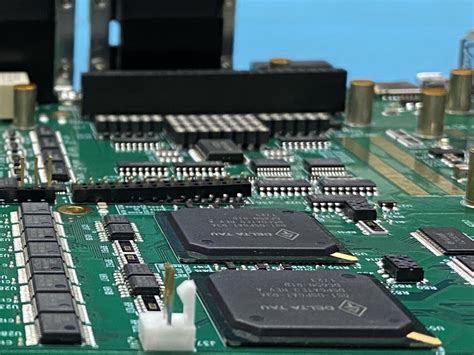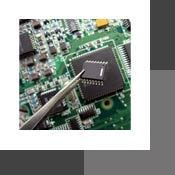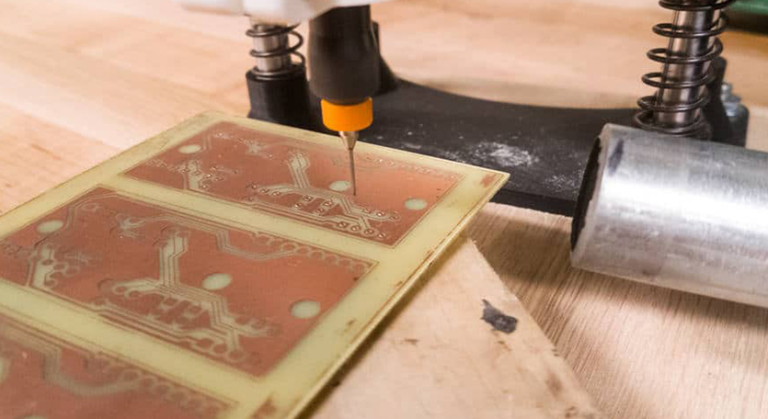PCB selective soldering technology details
PCB selective soldering technology details
Looking back on the development of electronic industry technology in recent years, we can notice that a very obvious trend is reflow soldering technology. In principle, traditional plug-in components can also use reflow soldering process, which is usually called through-hole reflow soldering. Its advantage is that it is possible to complete all solder joints at the same time, so as to minimize production costs. However, temperature-sensitive components limit the application of reflow soldering, whether it is plug-in components or SMD. Then people turned their attention to selective soldering. In most applications, selective soldering can be used after reflow soldering. This will become an economical and effective method to complete the soldering of the remaining plug-in components, and it is fully compatible with future lead-free soldering.
1 Process characteristics of selective soldering
The process characteristics of selective soldering can be understood by comparing with wave soldering.
The most obvious difference between the two is that the lower part of the PCB in wave soldering is completely immersed in liquid solder, while in selective soldering, only some specific areas are in contact with the solder wave. Since the PCB itself is a poor heat conduction medium, it will not heat and melt the solder joints of adjacent components and PCB areas during soldering. Flux must also be pre-applied before soldering. Compared with wave soldering, the flux is only applied to the lower part of the PCB to be soldered, not the entire PCB. In addition, selective soldering is only applicable to the soldering of plug-in components. Selective soldering is a new method, and a thorough understanding of the selective soldering process and equipment is necessary for successful soldering.
2 Selective soldering process
The typical selective soldering process includes: flux spraying, PCB preheating, dip soldering and drag soldering. Flux coating process In selective soldering, the flux coating process plays an important role. At the end of soldering heating and soldering, the flux should be sufficiently active to prevent the generation of bridges and prevent the PCB from oxidizing. The flux spraying is carried by the X/Y manipulator carrying the PCB over the flux nozzle, and the flux is sprayed to the PCB to be soldered. The flux has multiple modes such as single nozzle spray, micro-hole spray, and synchronous multi-point/graphic spray. The most important thing for microwave peak selective soldering after the reflow process is accurate flux spraying. The micro-hole spray type will never contaminate the area outside the solder joint. The minimum solder dot pattern diameter of micro-dot spraying is greater than 2mm, so the accuracy of the solder position deposited on the PCB is ±0.5mm to ensure that the solder always covers the soldered part. The tolerance of the amount of solder sprayed is provided by the supplier. The technical specification should specify the amount of solder used, and a 100% safety tolerance range is usually recommended.
2.1 Preheating process
The main purpose of preheating in the selective soldering process is not to reduce thermal stress, but to remove the solvent and pre-dry the solder flux so that the solder has the correct viscosity before entering the solder wave. During soldering, the effect of the heat brought by preheating on the soldering quality is not a key factor. The thickness of the PCB material, the device packaging specifications and the type of solder flux determine the setting of the preheating temperature. In selective soldering, there are different theoretical explanations for preheating: some process engineers believe that the PCB should be preheated before the solder flux is sprayed; another view is that no preheating is required and soldering can be performed directly. Users can arrange the process flow of selective soldering according to specific circumstances.
2.2 Soldering Process
Selective soldering process has two different processes: drag soldering process and dip soldering process.
Selective drag soldering process is completed on a single small solder nozzle solder wave.
Drag soldering process is suitable for soldering in very tight spaces on PCB. For example: individual solder joints or pins, single row of pins can be drag soldered. The PCB moves on the solder wave of the solder nozzle at different speeds and angles to achieve the best soldering quality. To ensure the stability of the soldering process, the inner diameter of the solder nozzle is less than 6mm. After the flow direction of the solder solution is determined, the solder nozzle is installed and optimized in different directions for different welding needs. The manipulator can approach the solder wave from different directions, that is, at different angles between 0° and 12°, so that users can solder various devices on electronic components. For most devices, the recommended tilt angle is 10°.
Compared with the dip soldering process, the movement of the solder solution and PCB board in the drag soldering process makes the heat conversion efficiency during soldering better than the dip soldering process. However, the heat required to form the weld connection is transferred by the solder wave, but the solder wave of a single solder nozzle has a small mass. Only when the temperature of the solder wave is relatively high can the requirements of the drag soldering process be met. Example: The solder temperature is 275℃~300℃, and the drag speed is usually acceptable at 10mm/s~25mm/s. Nitrogen is supplied in the welding area to prevent the solder wave from oxidizing. The solder wave eliminates oxidation, so that the drag soldering process avoids the generation of bridging defects. This advantage increases the stability and reliability of the drag soldering process.+
The machine has the characteristics of high precision and high flexibility.
The modular structure design system can be customized completely according to the customer’s special production requirements and can be upgraded to meet the needs of future production development. The movement radius of the manipulator can cover the flux nozzle, preheating and solder nozzle, so the same equipment can complete different welding processes. The machine’s unique synchronous process can greatly shorten the single board process cycle. The capabilities of the manipulator make this selective welding have the characteristics of high precision and high quality welding. First, the robot’s highly stable and precise positioning capability (±0.05mm) ensures that the parameters of each board are highly reproducible and consistent; second, the robot’s 5-dimensional movement enables the PCB to contact the tin surface at any optimized angle and orientation to obtain the best welding quality. The tin wave height probe installed on the robot clamping device is made of titanium alloy. It can regularly measure the tin wave height under program control and control the tin wave height by adjusting the tin pump speed to ensure process stability.
Despite the above advantages, the single-nozzle solder wave drag soldering process also has shortcomings:
the welding time is the longest among the three processes of flux spraying, preheating and welding. And because the solder joints are dragged one by one, as the number of solder joints increases, the welding time will increase significantly, and the welding efficiency cannot be compared with the traditional wave soldering process. But the situation is changing. The multi-nozzle design can maximize the output. For example, the use of dual welding nozzles can double the output, and the flux can also be designed as a dual nozzle.
The immersion selective soldering system has multiple solder nozzles, and is designed one-to-one with the PCB soldering points.
Although it is not as flexible as the robot type, the output is equivalent to the traditional wave soldering equipment, and the equipment cost is relatively lower than the robot type
. According to the size of the PCB, single or multiple boards can be transferred in parallel, and all the soldering points will be sprayed with flux, preheated and soldered in parallel at the same time. However, due to the different distribution of solder points on different PCBs, special solder nozzles need to be made for different PCBs. The size of the solder nozzle is as large as possible to ensure the stability of the soldering process and not affect the surrounding adjacent devices on the PCB. This is important and difficult for design engineers because the stability of the process may depend on it.
Using the immersion selective soldering process, solder joints of 0.7mm to 10mm can be soldered. The soldering process of short pins and small-sized pads is more stable, and the possibility of bridging is also small. The distance between the edges of adjacent solder joints, devices and solder nozzles should be greater than 5mm.







